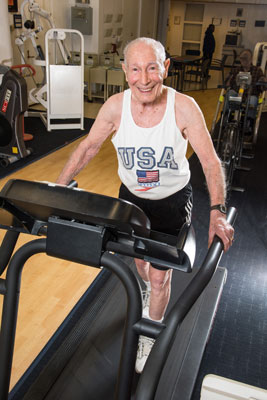
John Brancaccio *
Helping Others by Investing in the Future of St. Francis
John Brancaccio knows firsthand how stressful it can be to be diagnosed with heart valve disease. But 25 years after undergoing open-heart surgery to have his valve replaced and surviving amazing odds, the 90-year old retired mechanical engineer has made it his mission to help others by creating his legacy to ensure the future of the Heart Valve Center at St. Francis Hospital.
"There are many charitable options available today, if you are in a position to give. But my attitude is to provide help where the goal and outcome is almost an immediate impact in the lifestyle of an individual human being," says John.
When John was diagnosed with aortic valve stenosis after fainting on a tennis court in 1991, there was only one option for aortic valve replacement and it was surgery. "I wanted to see if I could find a hospital and physicians on Long Island who could perform the procedure as safely here as the best doctors in Manhattan. " John discovered a winning team in Richard Shlofmitz, M.D., an interventional cardiologist who's now Chairman of his Department at St. Francis, and Paul Damus, M.D., a cardiothoracic surgeon who has since retired from St. Francis.
After being given the option of a mechanical valve or a porcine one- John chose the latter even though he was told it could last only 8 to 10 years. But he's defied the odds and it's lasted a quarter of a century - part of which he attributes to his lifelong and current cardio training programs, and consistent stress test monitoring.
When John expressed his interest in making a bequest to benefit the Heart Valve Center prior to finalizing his plans, the Development team at St. Francis was able to offer John an opportunity to witness his transformational gift during his lifetime- a ceremony to commemorate his generosity will be held this spring. The John Brancaccio Heart Valve Center will be his lasting legacy so the next generation will benefit from continued advancements through less invasive approaches to patients, where none existed before.

